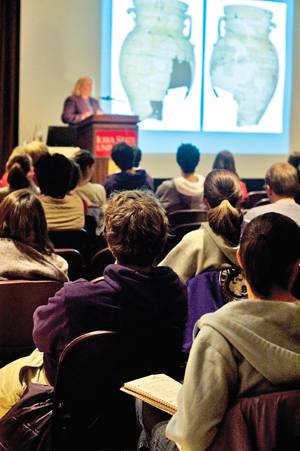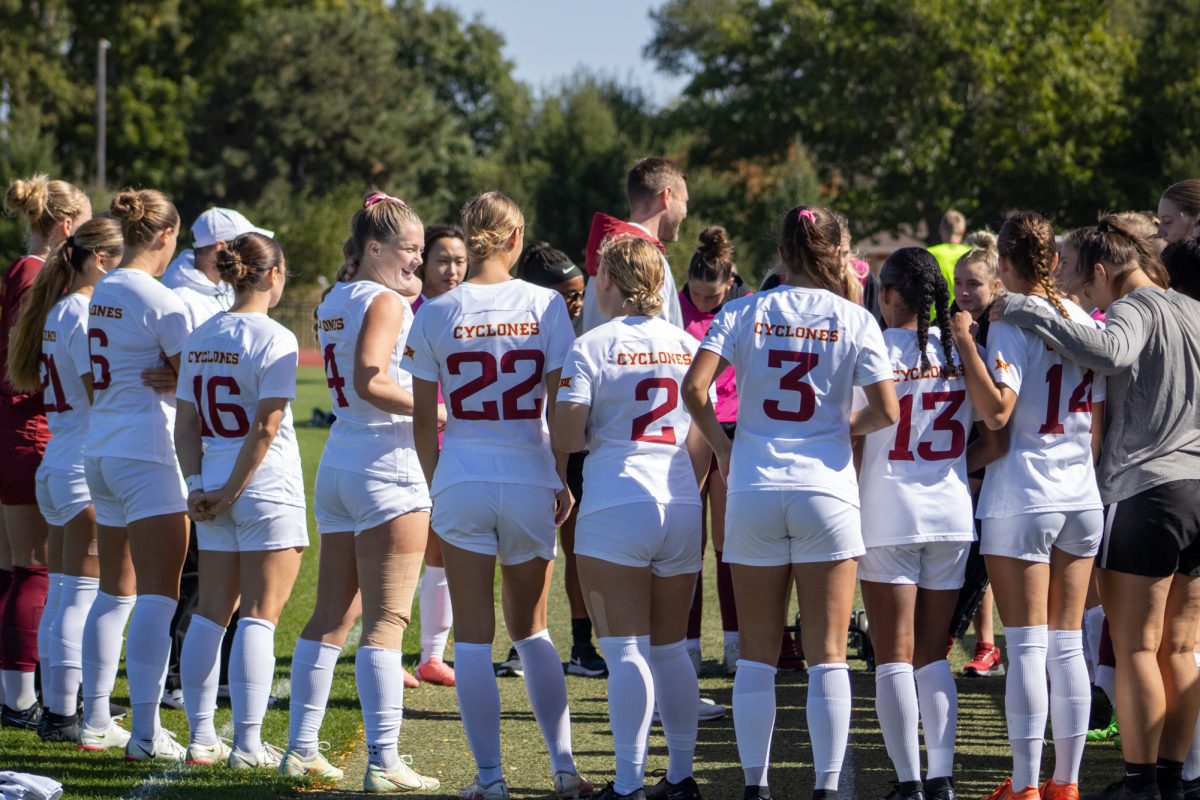Professor shares findings of Greek city

Lindsey Overton, sophomore in Animal Ecology, jots down notes during Margaret Mook’s lecture on Excavating the Ancient Greek City, Wednesday, November 12, 2008, in the Sun Room of the Memorial Union. Mook, an associate professor of classical studies, worked on a site called Azoria, on the island of Crete. Photo: Logan Gaedke/Iowa State Daily
November 12, 2008
When many think of archeology, they think of Indiana Jones.
Margaret Mook, associate professor of world languages and cultures, told her own Indiana Jones story Wednesday night in the Sun Room of the Memorial Union.
Mook spoke of her findings and experiences excavating the ancient Greek city of Azoria on the Isle of Crete in Greece.
Mook offered her expertise as field director and pottery specialist in the project from 2002 to 2006.
Many of her illustrations included pictures of the different types of pottery found at the site. They ranged from portable, small containers to large storage containers.
“We’re interested in changes in the economy and the impact of more centralized storage,” Mook said. “We’re beginning to get a sense of the volume of these jars. The larger has a capacity of 500 liters.”
Mook explained the various buildings the project excavated and their various contents. One of the buildings was the Andreion Complex, which served as a men’s dining hall in the city. Mook said it was a place for drinking, common meals, attending to civic affairs and sacrifices.
She explained the Andreion Complex had three store rooms, three kitchens and a dining room capable of holding 30 people.
The second building complex Mook described was the Monumental Civic Building Complex. She said there was a main building for public activities, as well as a service complex and several kitchens and storage areas. One of the objects found in one of the kitchens was the foot from an imported, bronze foot bath.
This is very much an element of elite display, Mook said, and this is the first one found on Crete so far.
In the Monumental Civic Building Complex, there was also a room devoted to an olive press. Mook showed illustrations of how this press would work.
The Azoria Project was made possible through the efforts of others besides Mook. “Several dozen” ISU students participated in the project as well.
The project received funding from many sources, including the National Geographic Society, the University of North Carolina at Chapel Hill, the Institute for Aegean Prehistory, the Wenner-Gren Foundation for Anthropological Research and the Loeb Classical Library Foundation.






